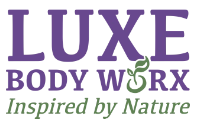Ingredients Matter, Skin Care Health
Tallow, a new fad on social media! But what is it?
Most people are willing to try just about anything for better skin, and that includes the newest unconventional skin care trend that is taking over tik tok. With all the hype on social media of celebrities and personalities promoting smeared fat on faces, folks are being lured into an alternate reality. This isn’t new. It happens with fad diets or exercise regimens too. Celebrities and personalities promote something and everyone can’t wait to get in line. It’s amazing the power they have, really. The latest craze for the last two years or so is tallow in skincare. Tallow is beef fat.
Tallow is typically used in cooking (remember lard), candle making, and soap making. Beef fat is rendered before use, cooked or boiled down to remove skin or bone fragments, capillaries, blood, and the like. Then it goes through a sort of distillation or filter, to ensure fragments are removed. Tallow is solid at room temperature just like the fat on your cut of beef from the grocery store.
Tallow is high in vitamins A, D, and K. If the cow is primarily grass fed and allowed to graze on open pasture, then tallow from that cow would also be high in vitamin E and omega-3 fatty acids. With this profile, it’s easy to believe this would be good for skin. However, tallow is very high in oleic acid, which can cause or actually worsen acne. It can also be comedogenic, clog pores. If you read the myriad of blogs promoting tallow, they tout non-comedogenic.
Unfortunately, there’s no research correlating beef tallow with healthier skin. It’s also not approved by the Food and Drug Administration (FDA) for use in skin care products. If you didn’t know, the FDA regulates the cosmetic industry. The rendering of beef fat is completely unregulated and as in all things, quality varies significantly, and you just don’t know what you’re getting.
Experts say that tallow pales in comparison to traditional skincare products. Board certified dermatologist Dr. Mureeb Shah states “there’s so many great skincare products out there now that are affordable and widely available that it wouldn’t make sense to take a chance on an ingredient that we don’t know works or not.” Dr. Shah boasts 18 million followers on tik tok as the Derm Doctor.
He noted that consumers tend to skew towards clean and cruelty free products. Tallow, then, is “anti what the skincare industry is looking for.”
“Tallow because its high in oleic acid, it’s been shown to disrupt the skin barrier and actually cause more irritation versus plant oils that are high in linolenic acid,” Shaw added, explaining why it’s “not really the best moisturizer.”
Dermatologists typically look for products that are high in linoleic acid and low in oleic acid. Shah also noted that despite the claims of being non-comedogenic, tallow ill most likely clog pores. “I wouldn’t actually even prefer it as a moisturizer when you actually break down the ingredients inside of it,” he warned.
The quality of the fat (as well as the meat) is wholly dependent on the nutrition profile of the cow. Hmmm….same as humans (you are what you eat).
More than 80 percent of the antibiotics sold in the U.S. are used in livestock production. Antibiotics suppress disease in unsanitary and overcrowded conditions, which are typically the conditions of the largest beef industry farms. I’ll get to why this important.
Hormones (estrogen and testosterone primarily) are given to growing cattle to promote fast and “meaty” growth. Cows with heftier flanks bring more dollars at the market.
After a cow is slaughtered, those antibiotics and hormones aren’t only in the meat, they’re in the fat. And rendering doesn’t remove them as the molecular size is smaller or equivalent to the fats in the fat. Spreading tallow on skin not only are you not getting the Vitamins (because they’re destroyed during renduring), instead you’re getting the antibiotics and hormones. Even grass fed beef has antibiotics and hormones. For beef to be considered organic the cow must have been grazed, no antibiotics or hormones, and fed only certified organic grass or fodder. Pretty tough to do and not cost effective for the cow farmer.
The beef industry is one of the biggest environmental offenders in greenhouse gas emissions and water consumption. I mention these things because if you care about the earth or nature in general, or want cruelty free products, using tallow in anything grinds against those beliefs.
There are a large variety of plant based ingredients that have equivalent or better profiles than tallow, that don’t harm the world we live in, are non-comedogenic and won’t disrupt the skins natural barrier. Camellia oil, rose hip oil, dandelion oil, pumpkin seed oil, carrot seed oil, neem oil, hemp seed oil, pomegranate seed oil, calendula oil, grapeseed oil, nettle leaf oil, black currant oil, apricot kernel oil, avocado oil, argan oil, comfrey oil, plantain oil, shea butter, olive oil and literally, the list goes on.
I encourage you to read the science, not the trend or hype, to seek truth. It’s easy to be persuaded, but not if you’re armed with knowledge.
Keep seeking the best in you, as it’s your time to rise, reach, and become. Keep looking up!
XO,
Samantha
Check out our growing plant based product line for healthier skin. It starts with a good bar of soap!

